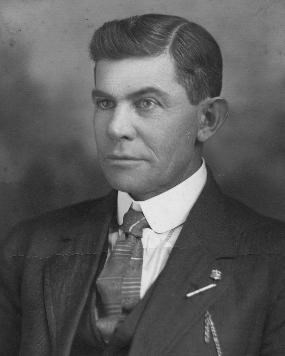|
Scientific farming practices enhanced the agricultural productivity of the Cuyahoga Valley region in the 19th century, improving the lives of farmers and better protecting the surrounding landscape. These practices included better irrigation and drainage systems, the use of special fertilizers, and the use of machines like tractors and combine harvesters that made farming more efficient. The 1860 agricultural census figures indicate that Ohio was a national agricultural leader, ranking 2nd in the country in cash value of farms. Crop production rankings for Ohio were in the top four for such staples as wheat, Indian corn, and oats. 
Courtesy/Peninsula Library & Historical Society Hammond-Cranz FarmEugene F. Cranz, who inherited his family's farm in 1898, was an innovative farmer who experimented with both horticulture and conservation efforts. He attended The Ohio State University where he learned new scientific methods for farming. Eugene was also a member of agricultural organizations, including the Grange, a 19th century farmers' alliance that is still in operation today. Jyurovat FarmScientific farming improved sanitation as well as efficiency. During this "progressive farming" period, from the early 20th century through 1944, changes in federal legislation prompted companies to design safe and sanitary barns and outbuildings. Improved sanitation and ventilation provided more comfort for animals, which then produced higher yields. Located on State Road 303, the Jyurovat farmstead's house, barn, and chicken coop were all examples of these newer and more efficient buildings. The Jyurovat's house and barn were designed by the James Manufacturing Company, which used innovative equipment to facilitate care and maintenance. The company's Jamesway Books offered farmers complete information on the most efficient manner of construction and maintaining outbuildings, specifically dairy barns, hog houses, and poultry houses. In the national park today, the Jyurovat Farm serves as the Woodlake Environmental Field Station. Click on the links to discover more: |
Last updated: December 20, 2021
